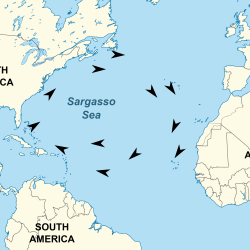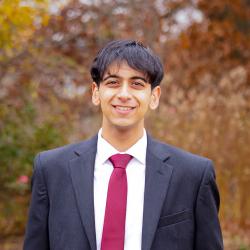Breaking Boundaries: New Teaching Strategies Cross Disciplines
In 2004, a group of Department of Cell Biology and Molecular Genetics faculty members, who specialize in different facets of host pathogen interactions, began searching for a better way to fully prepare students with knowledge to last a lifetime. They found an unlikely source of inspiration: a 1980 comedy sketch called “The Five-Minute University,” which was based on the premise that in five minutes you can learn what the average college graduate remembers five years after leaving school. As a starting point, the faculty members watched the infamous sketch and asked themselves: “In all seriousness, what do we want our students to remember five years from now?”
“We weren’t meeting students’ needs in terms of continuity in their education,” says Daniel Stein, professor of cell biology and molecular genetics. “We had not sorted out a learning progression. In some cases, students were not retaining information; in other cases, there were gaps in the courses.” Test results indicated that students were entering upper-level classes without mastering basic information.
With funding from the Howard Hughes Medical Institute (HHMI), the 19 members of the Host Pathogen Interaction (HPI) Teaching Community adopted a holistic approach to improve student understanding, including revamping nine microbiology and cell biology courses dealing with host pathogen interactions. More than 1,000 students enroll in these courses each academic year.
“We wanted to connect our courses so that the concepts build upon each other,” explains Ann Smith, an instructor of cell biology and molecular genetics and HPI Teaching Community leader. “The ‘cover everything’ approach wasn’t working,” says Smith, who recently became assistant dean in the university’s Office of Undergraduate Studies. “We decided to boil the curriculum down to the fundamentals.”
The faculty team developed a list of 13 core competencies and created a concept inventory to use as a pre- and post-course survey to assess student growth and understanding in each class. Faculty members pore over survey results every semester, identifying gaps and problem areas to inform curricular changes. The group meets monthly to discuss teaching strategies and ways to link the courses.
“We’re not just making changes in what we teach, but also in how we teach,” emphasizes Gili Marbach-Ad, an expert in science education and director of the CMNS Teaching and Learning Center. Marbach-Ad provides guidance to faculty members as they incorporate innovative techniques, including case studies and problem-based activities, into their coursework.
With National Science Foundation (NSF) funding, the team is also developing research-oriented activities that capitalize on the research interests and expertise of faculty members. In one activity, virology students develop proposals for new antiviral drugs. “The lesson resonates because students are involved in the learning process,” says Smith. In an immunology laboratory course, student teams design experiments to address questions related to current medical issues, such as lupus and asthma. “Students go though the whole scientific process: They raise a question, propose an experiment, write up their findings and peer-review each other’s work,” says Wenxia Song, associate professor of cell biology and molecular genetics.
Applying Laws of Physics to Biology
Using hand-held personal response clickers, the students in Fundamentals of Physics for Life Sciences select their answers to Physics Professor Joe Redish’s question on how to define a spring constant for DNA. Moments later a bar graph indicates how many students chose each option. The class is deeply divided. Redish smiles. “Find someone who disagrees with you, and convince them of your answer!” As students break into discussion groups, Redish paces up and down the aisle, knowing that his question is helping students grapple with a difficult concept.
Piloted this year, the course is a far cry from the traditional physics classes Redish began teaching at the university in 1970. The premise is to make physics relevant to biology majors, while engaging them in the learning process and sparking higher-order thinking. “This is a major re-orientation of introductory physics to match the way biologists look at the world and to use what has been learned about effective teaching from physics education research,” says Redish, who is part of an inter- disciplinary team developing a two-semester course sequence.
Karen Carleton, associate professor of biology who is helping create the physics sequence, points out that “if students can see the direct applicability of physics to biology, they are more likely to try to master it.” Carleton’s own research on fish vision straddles the two disciplines. “Organisms evolve in a world controlled by physical laws, which has big implications on what they do to survive,” she notes.
The College Park interdisciplinary team spent months debating and negotiating the details of the new physics sequence. The team decided to de-emphasize some topics taught in a traditional introductory course, such as projectile motion and torque, to make time for more relevant topics, including diffusion, molecular forces and chemical bonding. They also infused biological examples throughout the course.
The physics sequence is part of a four-university project to create and share effective models for teaching interdisciplinary science. Funded by HHMI, the four-year, $1.6 million National Experiment in Undergraduate Science Education (NEXUS) brings together the University of Maryland, College Park; Purdue University; the University of Miami; and the University of Maryland, Baltimore County.
“The lines of separation between scientific fields are starting to blur, and the really big problems facing humanity today cannot be solved by one person in one discipline. We need to reflect that reality in the way we teach undergraduate science education, so our students are prepared to lead in health and science fields,” adds Kaci Thompson, who directs CMNS undergraduate research and internship programs and heads the College Park NEXUS team.
The four NEXUS schools all seek to address educational concerns brought to the forefront by Scientific Foundations for Future Physicians, a 2009 report by the Association of American Medical Colleges (AAMC) and HHMI. “The emphasis is on demonstrating student competencies in certain areas, instead of just checking off that students have taken certain courses,” explains Thompson. A new version of the Medical College Admission Test (MCAT), set for release in 2015, will reflect these competencies.
Trevor Maples, B.S. ’13, General Biology, is among the 24 students in the pilot class. “When we learn about tension, we talk about how the concept relates to things such as stretching DNA,” he says. “In a traditional physics class, I would learn countless equations that never make the connection to biology.”
Giving Math New Meaning
CMNS educators are also integrating mathematics more closely with the biology curriculum. “Nationally, there is growing recognition of the importance of mathematics for the biological sciences,” says Biology Professor William Fagan, whose own research uses statistical and spatial analysis to understand ecological patterns and dynamics. “Biological research is becoming more quantitatively sophisticated, particularly in fields like biophysics, ecology, physiology and population genetics.”
A team of CMNS biology and mathematics professors collaborated on a two-semester calculus sequence for biology majors that was introduced in 2008 and honored by the university’s Center for Teaching Excellence in 2009. “We shifted the content to focus on the mathematical skills and expertise that are most relevant to the questions biologists must answer,” says Fagan. For example, the curriculum de-emphasizes integral calculus to make room for differential equations, probability and statistics.
“In a generic course, it’s hard to make the math meaningful to students. Now math can speak to the biology students’ hearts,” notes Mathematics Professor Doron Levy, who helped develop the sequence. “Increasingly, biologists, physicists, engineers and doctors are working together on problems. You need to have enough understanding of other disciplines to allow you to communicate and work together.”
In addition to lectures, students attend two discussion sessions each week—one led by a math teaching assistant and the other by a biology teaching assistant. Students complete BioModules, which “reflect current issues and are often inspired by CMNS research,” says Levy. In one BioModule students examine the mathematical relationship between sea ice and krill growth in the Antarctic Ocean. Given that Adélie penguins require a certain amount of krill as food, students are then asked to find the maximum size of a colony of Adélie penguins. In this case, Fagan’s lab is studying the effect of climate change on penguin populations.
Fagan also helped originate the MathBench Initiative, another effort to integrate biology and mathematics. With HHMI and NSF funding, the MathBench team has developed 40 online, interactive modules designed to supplement five fundamental biology courses for CMNS undergraduates. Using colloquial language and humor, the modules step students through mathematical concepts, exploring a range of problems from bacteria’s exponential growth to using a log scale to measure an orange’s acidity. A 2009 study found that students in a CMNS introductory biology course that incorporated nine of the modules showed significant improvement in quantitative skills, a majority of students attributing the improvement to MathBench.
A $500,000 NSF grant is helping the MathBench team disseminate its work nationally. Thirty-three institutions nationwide have attended MathBench workshops and are working to implement the modules in their curricula.
Preparing Cyber Sleuths
A new CyberLab course taught by computer science and engineering faculty will provide undergraduates in those two majors with critical skills to keep the nation’s computer infrastructure up and running and protect computer networks and systems from cyber attacks. “The demand for cybersecurity graduates is outpacing the supply,” says Eric Chapman, associate director of the Maryland Cybersecurity Center (MC2), which is helping develop the course. “CyberLab will play a vital role in preparing our students for the cybersecurity workforce.”
Set to debut in the fall, CyberLab is just one of the education initiatives offered through MC2, which was launched in 2010 to provide an interdisciplinary approach to cybersecurity education and research. Faculty from an array of other fields, including information sciences, business, public policy, social sciences and economics, along with representatives from government and industry are among the center’s collaborators.
CyberLab will provide an intensive laboratory experience, designed to give students an edge in the job market. “The course is a tool-based introduction to cybersecurity, from detecting and preventing intrusions, to attesting to the integrity of hardware, to analyzing software to look for vulnerabilities,” says Michael Hicks, MC2 director and an associate professor in Computer Science and the University of Maryland Institute for Advanced Computer Studies. Hicks, along with fellow computer science faculty members Jeff Foster and Jonathan Katz, will team-teach the upper-level course with two electrical and computer engineering faculty members. Lockheed Martin is providing $20,000 in seed money to help develop the course.
This semester, the center also launched an innovative computer science course that will prepare the next generation of cybersecurity professionals while helping to safeguard the university’s Internet services. An independent study course, Secure Maryland, trains students to find and fix vulnerabilities in campus Internet services.
Hicks is advising computer science faculty members on how to infuse cybersecurity models throughout their courses. “All computer science majors need to learn about secure programming.” He is also collaborating with colleagues campus-wide to incorporate the topic into non-technical courses. “Cybersecurity can be approached from a variety of perspectives, including policy, economics and criminology.”







